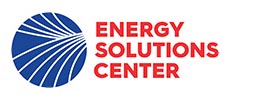How Absorption Heat Pumps Work
Absorption heat pumps are available in several different versions:
- Air Source Heating Only – Gas absorption heater that can provide space and/or water heating at very high efficiencies (COP – 1.4)
- Air Source Heating/Cooling– Reversible gas-fired absorption heat pump that alternately produces hot water for space and/or water heating and chilled water for space cooling, thanks to the inversion of the thermodynamic cycle.
- Water Source – Gas absorption heat pump designed for geothermal systems that can provide space/water heating and/or cooling.
- Simultaneous Heating & Cooling – Gas absorption heat pump (air source or geothermal) that simultaneously produces hot water& chilled water.
- Heat Pump Tank Water Heaters: Domestic tank water heaters that use an absorption based heat pump to heat the stored water with efficiencies well over 100%.

Heat pumps are systems that transfer heat energy from a lower temperature to a higher temperature (hot source), by inverting the natural thermal flow (in which heat is carried from warm mediums towards cooler ones). This flow capability works whether one wishes to provide heating or cooling with a single piece of equipment.
In heating mode, the system combines heat from the natural gas with heat “pumped” from the outside air (or geothermal loop) to provide space or water heating thereby obtaining high energy efficiencies (COP = 1.4). The natural gas absorption heat pump differs from traditional electrical heat pumps due to the energy that it uses. Instead of consuming electric energy to operate a vapor compression cycle, the absorption heat pump consumes gas in a premixing burner, which heats a solution of water and ammonia in a completely sealed absorption circuit.
In generic terms, absorption heat pumps are hydronic type systems (like a boiler that sits outside), as they heat and/or cool the water that is required. One of the many advantages of this characteristic is that it allows the heating and cooling input temperature to be managed better, making for precise adjustments to indoor comfort, thus increasing the operating efficiency and comfort of the entire system.
How Engine-Driven Heat Pumps Work
Engine driven pumps are available in several different versions:
- Air Source Hot Water Only
- Air Source Hot Water/Cold Water
- Water Source for use in geothermal systems
- VRF (Variable Refrigerant Flow systems)
- Simultaneous Heating & Cooling
The engine-driven gas heat pump air conditioning systems utilizes an efficient reciprocating engine running on a natural gas to produce the shaft horsepower to turn a vapor compressor. The heat pump cycle uses the compression cycle to turn the liquid refrigerant into a gas.

As it does this, it absorbs heat from its surroundings and conversely when a gas is concentrated and turned into a liquid it generates heat. Using these principles, the compressor, driven by an economical engine circulates the refrigerant thru the gasification and liquefaction cycles. The cooling and heating is accomplished by this circulation. As the basic principle of operation is the same as an electric vapor compression heat pump, the primary advantage of an engine-driven heat pump is the operating cost.
